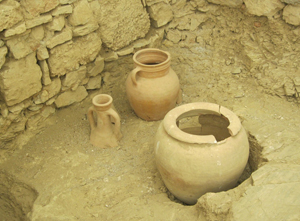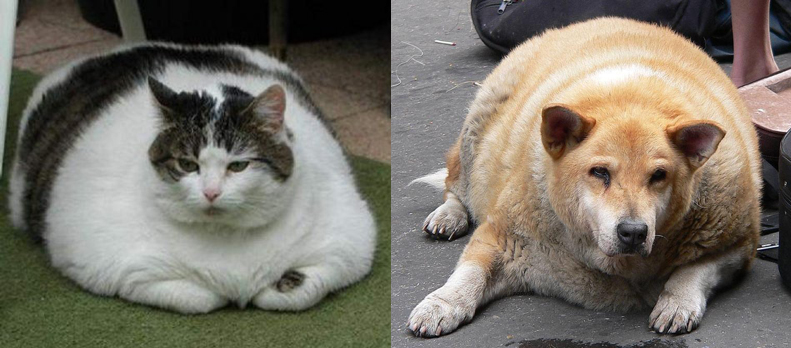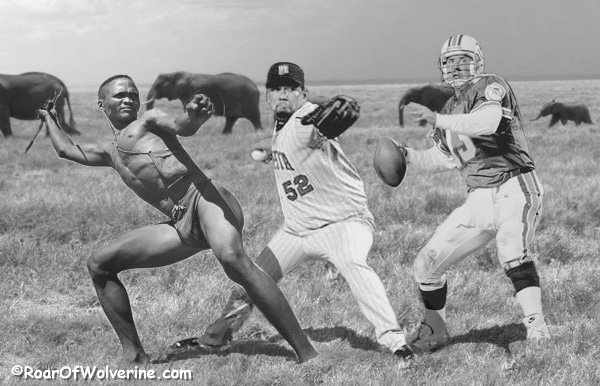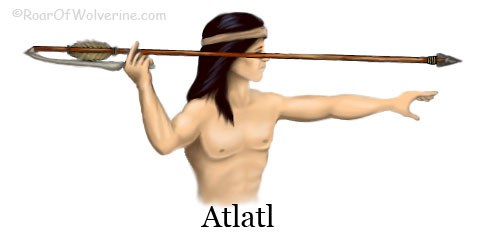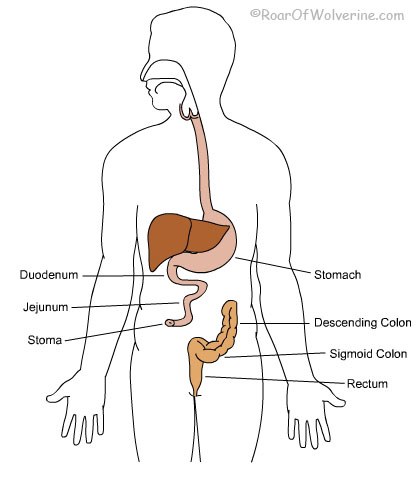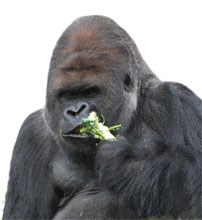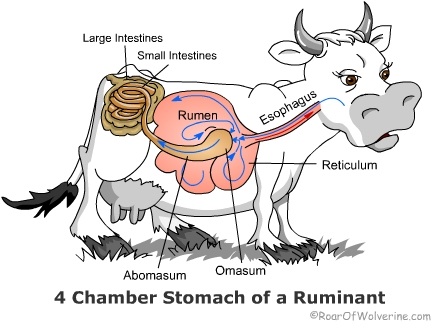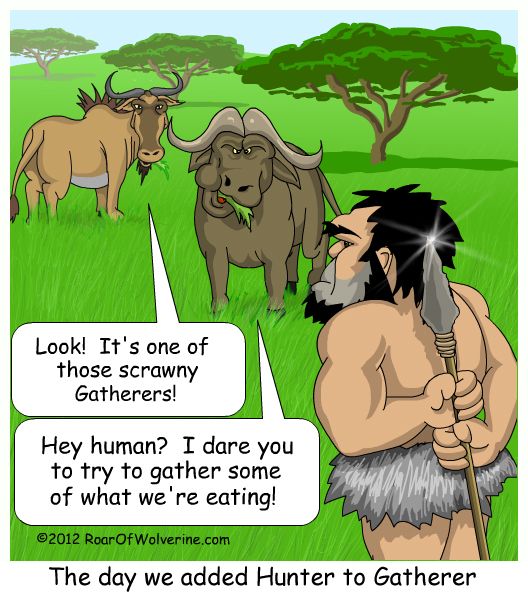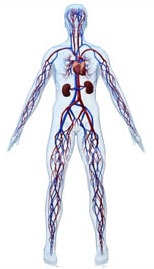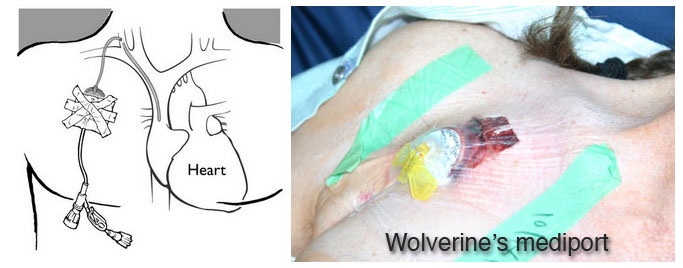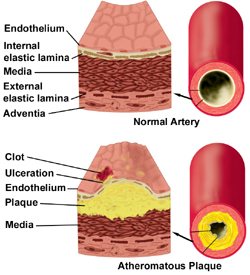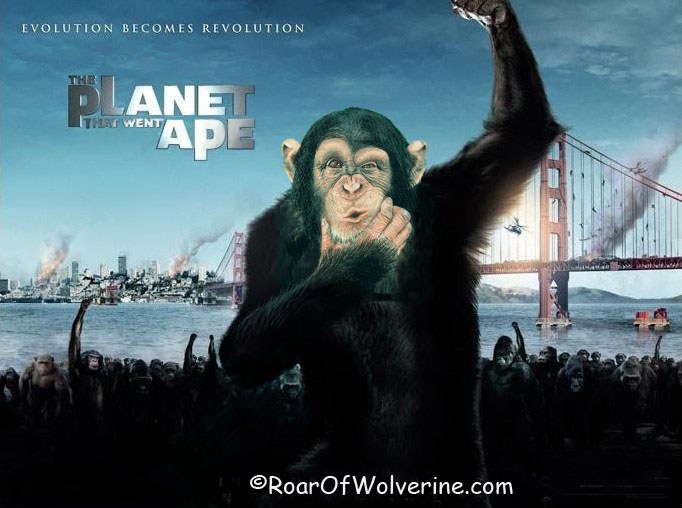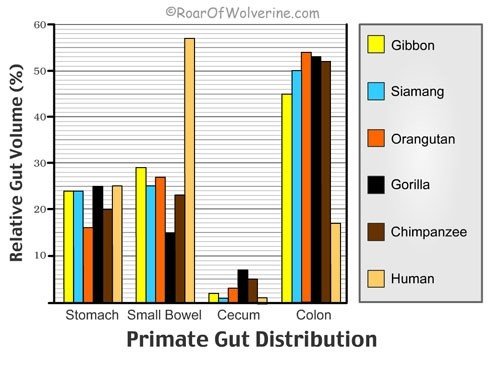Are Whole-Healthy-Grains Defenseless?
 In a world full of animals that bite, claw, sting, envenomate and gore, it’s nice to know that there are perfectly defenseless plants for the weak at heart to hunt. But are plants really as defenseless as they appear? We all know that there are plenty of highly toxic plants in the world, but certainly the ones we eat aren’t poisonous. Think again. There have been weapons of mass destruction created from plant toxins, like ricin (used by the Soviets during the cold war), but I know of no WMD ever derived from animals.
In a world full of animals that bite, claw, sting, envenomate and gore, it’s nice to know that there are perfectly defenseless plants for the weak at heart to hunt. But are plants really as defenseless as they appear? We all know that there are plenty of highly toxic plants in the world, but certainly the ones we eat aren’t poisonous. Think again. There have been weapons of mass destruction created from plant toxins, like ricin (used by the Soviets during the cold war), but I know of no WMD ever derived from animals.
Every single living thing on this planet has one goal in mind – to proliferate its genetics. Nothing wants to be eaten – life has a mechanism to protect itself and its offspring. The nice thing about animals as a food source is that their defenses typically die with them. Whether it’s sharp teeth, powerful jaws, stingers, horns or hooves they are no longer a threat after the animal is dispatched. Even a rattlesnake is quite edible once it is dead. Plants have evolved a much different way to protect themselves – and especially their offspring. Any species that does not develop a mechanism to protect its children would have certainly went extinct by now.
There is a major misconception that human beings existed mostly on plant foods with only a small amount of meat for supplement. I guess the conventional wisdom there is based on the idea that our human ancestors were poor at hunting. Yet, there is plenty of historical evidence of primitive hunter/gatherers hunting certain species into extinction, like the very large ruminant, Aurochs. So our ancestors were not poor hunters – it is only because we have been shopping for our meat for so long, that we have lost many hunting and trapping skills of our ancestors. Given the fact that better than 99.9% of all plants on this planet are poisonous to human beings, I’m not sure how this myth has stood the test of time. I guess if something is repeated enough, people will come to believe it.
Unless the entire planet were a rainforest, it would have been impossible for humans to cover the earth as a vegetarian species. Even many of the plants we consume today are toxic to us in their raw state, especially their offspring. Beans, legumes and seeds of all kind are the future of the plant – they are the zygote from which more generations will spring forth. So why would the plant leave them undefended? They don’t. Most seeds contain lectins, which are highly toxic to most animals. The lectins of the castor bean are so lethal that they were used in the formation of the warfare chemical called ricin. A dose as small as a few grains of salt is more than enough to kill an adult human. Many weapons of mass destruction have been created using plant toxins – I know of no WMD that was ever derived from an animal.
Prior to the advent of fire and the ability to make containers to cook them in, it would have been impossible for humans to consume any quantity of beans, legumes or grains. Heat can destroy the lectins in many plants, so humans were able to use them as a food source once cooking was available. But heat does little to reduce the amount of phytic acid contained within the offspring of the plant. Phytic acid binds to many minerals, such as iron, calcium, zinc and magnesium, which renders them unavailable for absorption. These precious mineral are then carried away and excreted from the body.
Only by soaking and fermenting seeds can phytic acid be reduced. Any predator that would gorge itself on the seeds of these plants, would soon find themselves depleted and deficient in many of these minerals, which can be quite problematic. And few seeds are higher in phytic acid than soybeans, which is why the Asian people only consumed soy that was heavily fermented. The massive amounts of soy inundated in all of today’s processed foods is not fermented and therefore quite counter productive to good nutrition. Is it any wonder why osteoporosis is so prevalent in our time? With all of the phytates within those grains, beans and legumes, the american people are crapping out their dietary calcium by the bucket, because it is bound to the phytates. Then, their high carbohydrate diet further deplete calcium from their bones and teeth. Because calcium is the only way the body can neutralize the high blood acidity cause by high blood sugar, if dietary calcium is not high enough, it will rob it from the bones. Eating lots of sugar and phytic acid is a recipe for osteoporosis. This is the standard american diet (SAD).
Most antacid tablets for gastritis, such as Tums, contain mostly calcium because of its neutralizing properties. Our body also uses calcium to neutralize acidic blood, which is deadly if not neutralized. That’s why I believe that it is not the cholesterol (which is flexible) that causes hardening of the arteries, but all the calcium caught in the plaque that leads to a cardiac event. Just like the Egyptians, the high carbohydrate blood level invites calcium into the bloodstream which gets caught in the plaque and lead to loss of arterial flexibility. When Mann studied the Masai, who eat tons of meat and milk, he found cholesterol plaque, but they rarely suffered heart attacks, because the cholesterol was flexible (being a fat) and allowed the arteries to expand. Mann did not find calcium deposits in their plaque, probably because of their low carbohydrate consumption, thus lower blood acidity.
The most diabolical design of these plant defenses, is that they will not kill the predator right away, especially in the absence of the lectin. If we humans were to eat raw seed, we would become very ill or die within a short time of consuming them. That was how our ancestor would have made the association that it was the seeds that were making them ill and avoided them as a food source. Once we learned that heat would prevent us from getting sick right away, then the first agriculturist civilizations determined that they would be safe to eat.
But unfortunately, there are many back-up defenses evolved into the plants, which do not cause illness right away, thereby making it difficult for people to determine that it is the plant that is causing their failing health. Now, we have such a large part of the U.S. economy structured on the proliferation of grains, making it even more difficult for anyone to make the correlation, because they are bombarded daily with advertising telling them how super-healthy these grains, beans and legumes are. Aside from containing a butt-load of carbohydrates, grains and other seeds are a poor source of nutrition. Human cultures that had to predominantly live on grains found ways to make them easier to digest, but the process of doing so is quite laborious and time-consuming – and in today’s times – not very profitable.
Because poor people had to exist mostly on grains, many of them, and especially their children, suffered from malnutrition. Because of this, the U.S. government began to mandate that flour made from grains be fortified with vitamins and minerals by their manufacturers. If grains, bean and legumes were naturally high in nutrition, then why were the poorer people, who could only afford grains, becoming sick? And why does the government require the enrichment of cereals and flour, if they were so uber-healthy? Grains are naturally high in only one nutrient – sugar. Grains are not only very high in carbohydrates, but contain carbohydrates, such as amylopectin-a, which spike the blood glucose levels higher than cane or beet sugar. Is it any wonder that diabetes has reached epidemic proportions? The U.S. government recommends 8 to 11 servings of these blood sugar spikers per day.
During his studies, Doctor Weston A. Price found civilizations whose nutrition depended on plants and grains, because of their location and lack of good hunting. Price found no civilization or tribe who thrived on a fully plant-based diet, absent of any animal foods, but he did find cultures that ate little animal foods and were able to thrive on a grain based diet. But, these people went to great length to make these seeds digestible. They were soaked, sprouted. roasted, ground and then fermented (creating sourdough) before baking them into bread or cakes. Very few people today ferment grains or beans, because it is a time-consuming process and not very profitable to the process food manufacturers. Even sourdough bread commercially sold are rarely fermented and have sour additives for sour flavor. If you have ever eaten fermented sourdough bread, you would find them far more sour than any commercial bread advertised as sourdough.
It is far more likely that most of our ancestors prized meat and animal products far above plant foods for its higher nutrition and better safety from toxins, which is why we still call vegetables a side-dish to this day. Plants were much easier to acquire, so they would have sought after meat as a first priority and simply settle for plants if meat was not readily available and if a hunt was successful, they would supplement or cook the vegetation with the meat. But, grains were simply not a part of the paleolithic man’s diet until the technology was discovered to make them safe to eat, which only occurred about 10,000 years ago – just a fraction of the time that humans have been around. Early grain eating societies, like the Egyptians, have recently been diagnosed with massive calcium deposits in their arteries at ages of 40 to 50 years old. CT scans of ancient mummies has revealed dangerous levels of atherosclerosis. (source) (source) (source). Remember, these were active people, who ate very little animal fat (usually geese) and got plenty of sunshine. But the Egyptians loved wheat. They made cakes, smothered in honey and were the inventors of beer from barley and consumed it as the hydration drink of choice. Was it their love of wheat that was killing them? I believe so.
The soybean had a much more diabolical defense to unleash on its predators. The seed of the soy plant contains very high levels of phytoestrogens. The purpose of these plant-based estrogen is to cause the insects that dine on them to ultimately become sterile, so the parents may feast on the seeds, but there will be a lot fewer offspring of the predator in the future. The soybean has evolved its own birth control for those that would eat its young – after all, birth control pills are just estrogen. These high doses of estrogen can be very problematic for humans, causing breast cancer and young women to enter puberty at a very young age and the boys will not enter puberty until a much older ages.
Peek into your pantry and read some of the processed food labels and you will be amazed how many products contain unfermented soy products. Even most tuna fish cans will list soy as an ingredient. If you are eating tuna to obtain more omega 3 fatty acids, they have tricked you by adding omega 6 soybean as filler. (you can get tuna without soy, but it’s a bit more expensive.). You are probably consuming mass quantities of unfermented soy – why? Because soy was a necessary plant used in crop rotation to replenish nitrogen into the soil, so they had to find a way to market it. The government subsidizes farmers that grow it, so its cheap filler for all processed foods – and is making us sick. It makes cattle and chickens sick, why does anyone believe that it is a health food? A lot of heavy advertising and marketing brainwashing.
Fruits evolved a completely different mechanism. The fruit is not a zygote, but actually the ovary of the plant. The ovary is purposely designed to be high in nutrition and sweet and juicy, because the plant actually wants a predator to eat the fruit. The seeds of the fruit are completely indigestible, so the plant willfully surrenders its delicious ovary so it will be replanted somewhere else when the predator takes a dump. But only a fool would decide to grind up the seed of the fruit and make a bread or cake from the flour. We know that the seeds of most fruits are highly toxic and many can kill a human in short order if made digestible and eaten in quantity. If we all know this, then why are we convinced that the seeds of other plants are so defenseless, just waiting to be plucked, cooked and eaten? They are not.
If seeds are left so defenseless, I defy anyone to grind up some apricot and apple seeds, make a flour and bake it into a cookie and eat it. It will be the last thing you will ever eat. Apricots seeds and apple seeds both contain hydrogen cyanide. If swallowed, they are harmless, because we cannot digest then and they will safely pass though us. One seed crushed may not kill you, but could make you feel ill. Several seed ground up into a flour is certain death to those that dare to eat it. Plants do and will defend their babies as ferociously as any mother bear would defend her cubs.
Many birds and insects have evolved mechanisms to deal with the toxins in grains. Rodents seem to be one of the only mammals that can thrive on grains. One thing that all of these animals have in common is a very fast metabolism – humans do not. Any wonder why the problems with obesity in the modern world? We are eating foods intended for animals with heart beats and metabolisms 8 to 10 times that of a human. We cannot possibly burn the calories per hours that these animals have to. A humming-bird must dine on pure sugar, but unless you can flap your arms at 80 times per second all day and maintain a heartbeat of 1,200 beats per minute (the human heart would explode) then you can share in their diet. Problem is, humans are consuming the calories from sugar at the rate of a humming-bird, with our 74 beat per minute heart rate. Hmmm. wonder why so many are obese.
As far as plant toxins, many species of birds are known to first consume types of clay prior to eating some of these poisonous grains and berries. Minerals in the clay can chelate to the toxins and safely remove them. Humans have no such system yet continue to eat unfermented grains by the pound. Doughnuts, begals, pasta, snack cakes, chips – all loaded with these anti-nutrients which rob minerals from your body. The plants will win the battle in the long run, as all of humanity, eating 8 to 11 servings of these heavily defended offspring, playing a game of diabolical chemical warfare on your system, continue to make the human race fatter and sicker (think diabetes).
These little monsters are also reeking havoc on our digestive system, as the gluten protein wear away at your intestinal villi, shrinking them back and opening huge holes in the intestinal mucosa. Once this happens, large proteins can be absorbed into the bloodstream and cause many autoimmune disease. Celiacs, Crohn’s, Ulcerative Colitis have been on the steady rising and there is no cure known for these diseases, other than cessation from grains, but few doctors will go against the zeitgeist of the huge advertising of the giant agribusiness (who own the USDA) and will continue to recommend that these IBD patients increase their grain consumption. Every new study has proven what IBD sufferers already knew, grain fibers make their condition worse. Though most doctors (who tend to be behind the times) still recommend insoluble fiber from grains, new studies have shown this to be counterproductive, causing gas, bloating, obstructions and bleeding in patients. Read the testimonies here from some IBD patients talking about the horrible results they suffered when following a doctor’s advice to include indigestible psyllium from grains) into their diet. I had similar experience with insoluble fiber as they had.
Don’t fool yourself into believing that these people are some how different or from another planet. (basically saying, “it sucks to be them”). I consider them and me to simply be a more sensitive meter. Similar damages are being perpetrated on your gut at a slower degradation, but it’s there. If you do not believe me, take a scan of the gastric medicine isle at your local pharmacy or even Walmart or Target. Look at all the different OTC medications for GERD, constipation, diarrhea, gas, enzymes for digestion (such as beano) and indigestion. Someone must be buying this crap, or these stores would not stock so much of it. How many times a week do you take one of these products?
Our ancestors did not have access to such OTCs, so they had to learn to avoid or better prepare foods that caused these problems. Now people feel free to indulge in any crap they want and then pop some protonic or other digestive aid. Is this really healthy? The damage is still being done and you may well develop an IBD or colorectal cancer at some point. Grain fiber WILL NOT prevent colorectal cancer as the heavy advertising from the agribusiness has brainwashed everyone – in fact, I believe it has instigated the higher numbers of cases now than we had 100 years ago. We would have less reason to risk people’s lives with dangerous procedures, like colonoscopies, if grain eating (especially whole gain with the indigestible husks) were not the predominant food of choice. I believe that colorectal cancer rates would dive bomb and the fear would not be so great as to scare people into risking their lives for colorectal screening (please read my post “The Dangers Of Colonoscopies”) that kills and disables so many at much younger ages than anyone would ever develop cancer.
Ruminant animals, such as cattle, get very sick and will die on a grain based diet if not given antibiotics. It must have been brilliant marketing to convince what is supposed to be intelligent people that the same grain used to fatten cattle, which makes them sick and in need of daily antibiotic injections, would somehow make humans slim and healthy. As should have been predicted, these grains also made humans fat and sick – any wonder why.
Dogs and cats have begun to develop many of the same diseases afflicting humans when fed a grain based diet, and most modern pet foods, made for these carnivores, is made mostly from grains. Now it is quite common to see obesity, diabetes and even cancer in our pets. Someone felt it was a great idea to base most of our dietary studies using rodents, which is why I pay little attention to any study which based their study on rats. They are possibly one of the only mammals that have evolved to eat grains and are therefore a very poor analog for humans, who have not developed such a mechanism to deal with the problems offered by grains.
Historically, grains were mostly reserved for the poor as a dietary base and the poor have historically always been sick – therefore why the government mandated the addition of man-made nutrients into the cereal and flour (think agribusiness, like Monsanto, and cereal companies who give huge grants to the USDA and actually have ex-employees appointed to positions in the FDA and USDA). If a diet rich in grains were the healthiest diet, then the impoverish people would have enjoyed the better health over the rich people who ate so much more animal fat. This was never the case. How have people of means, in one of the richest nations in the world, been convinced that the diet historically eaten by the poor and sickly was the diet best for the human being escapes me? A masterful brainwashing indeed.
These grasses have not been around for millions of years by waving around naked and undefended from predators, with all that sugar available for easy food. They evolved to reduce their predators population and unfortunately we are now the predator. Their highly bioavailable sugars promote visceral fat, which in turn drive hormones, such as leptin (messes up the brain’s ability to determine satiation) and insulin (which drives fat to be stored), rendering the predator into a perpetual hunger needing more and more and satisfaction is never achieved. As a result, this predator suffers obesity, diabetes; which leads to heart disease and cancer and a whole host of gastric and digestive malfunctions.
This is all driven by the billions of dollars of advertising and influence of the large agribusiness, bread and cereal companies to market their highly profitable, government subsidized, genetically engineered and patented franken-plants. They have successfully convinced people, politicians and medical personnel that these foods, that are at the heart of most of the american health problems, are the healthiest foods that humans have evolved to eat. How could a species evolved to thrive on such a strange food they never consumed for 99% of their existence in less than 10,000 years?
The plant’s diabolical defenses, that still remain lethal far after harvest, are winning the battle for survival. They were here before humans and will be here long after humans are gone. Their purpose is to reduce the population of their predator and it seems that they are on their way to achieving that goal.
If you read my post entitled, “Are Humans Living Longer Than Ever Before“, it explains how poor nutrition killed the impoverish en mass. The poverty-stricken people over 100 years ago had no choice but to attempt to live on flour and sugar for calories, which were very low in available nutrients, thus succumb to malnutrition and other diseases of deficiencies, such as beriberi, rickets and even scurvy. This was why the U.S. government mandated that all grain flour and cereal would have to be fortified or enriched with man-made vitamins. The health of the poor did improve as a result, so it was a success, but still did not enjoy the health that those of means, who were able to eat animal foods, did. The enriched flour is typically inundated with mostly B vitamins, because they can stand the heat of cooking, but still lack vitamin C (which is heat sensitive) and vitamin D3, the most important for human health. These are also man-made vitamins and there are many questions as to their bioavailability, especially after being baked in excess of 350ºF and even higher temperatures when extruded to make cereal flakes and other shapes, where proteins are denatured and vitamins are destroyed.
My next rant will concern the large agribusiness and bioengineering companies, like Monsanto and where I believe that their future goals are and how they will affect us. I hope you will return to read it. It should be finished in a few days. I would like to thank all my readers and especially those who have provided links to some of my articles and help spread the word on the very important information concerning colonoscopy dangers and the fact that intestinal transplants are possible and can give back life to those stuck on TPN. Together we can make a difference, even if small, we can certainly save some lives.
